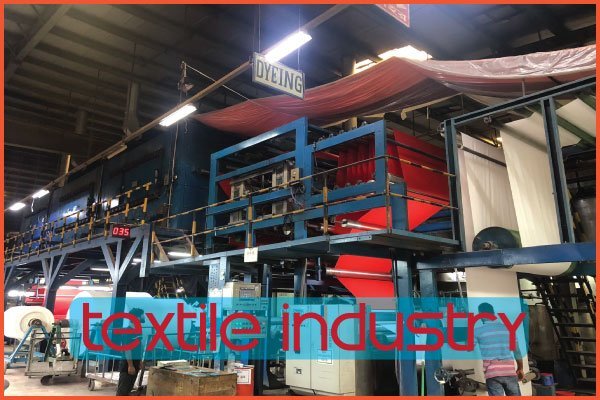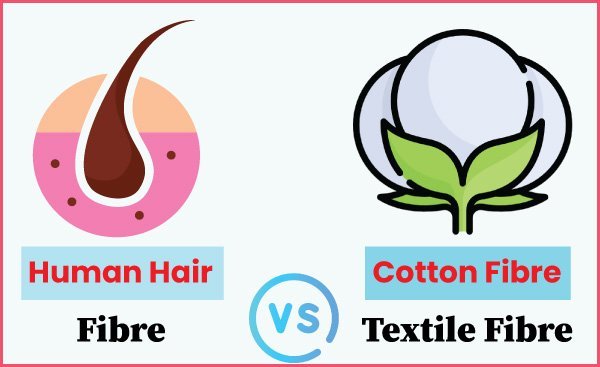Last updated on June 19th, 2023 at 05:28 am
Before learning about Textile Industry, first, we should know what is textile? The basic meaning of Textile is woven or knitted fabric made from yarn. But apart from fibre, yarn and fabric or any other product made from these combinations are defined Textiles. Textile is also associated with clothing production. Fibre is the raw material of textile which may be natural or man-made.
Definition of Textile Industry
The textile industry is the industry that involves the sections like research, design, development, manufacturing and distribution of textiles, fabrics and clothing.

Up until the revolution of industries, fabrics and clothing were made in the home by individuals for personal use. Sometimes they were also resale on a small scale. The Textile industry was born with the invention of the flying shuttle in 1733, the spinning jenny in 1764, and the power loom in 1784. Then the fabrics and clothing began to be mass-produced. When James Watt’s improved steam engine in 1775, Eli Whitney’s cotton gin in 1792, and Elias Howe’s sewing machine in 1846 all contributed greatly to the success of the textile industry as well.
Now a day, the textile industry is a global phenomenon comprised of every business involved in the developing, producing, manufacturing, and distribution of textiles. Now it is also a very complex industry. It starts in agriculture with fibre production, husbandry of sheep and silkworm, mining of metals and minerals. Then these fibres are processed into yarns, fabrics and apparel. This includes spinning mills, weaving mills, knitting mills, dyeing mills, garments. In addition, companies that sell buttons, zippers, knitting supplies, sewing machines and threads, laces, looms, and drapery hardware is also related to this industry.
Departments of Textile Industry
Now we are going to discuss the departments of the textile industry in brief as follows –
Spinning
The conversion of fibre (natural or man-made) into yarn is called spinning. The spinning department has many steps like blow room, carding, drawing, combing, simplex and ring frame. Blow room is the first step of spinning. Here the cotton bale is turned into a uniform lap of a particular length by opening, cleaning, blending or mixing. The next step is carding. Carding is called the heart of spinning. The third step is drawing. Here the slivers are blended, doubled, levelled and drafted. The next step is combing. It is a process of straightening and parallelizing fibres and also the removal of short fibres and impurities. Then the step that comes is simplex. Here slivers are attenuated and also given a small amount of twist. Then the slivers are turned into roving. The last step is the ring frame. The roving, on bobbins, is placed in the ring frame, where it passes through several sets of rollers running at higher rates of speed and is finally drawn out to yarn.
Fabric Manufacturing
There are different methods of fabric manufacturing. Among them, weaving and knitting are mostly used. Weaving is the major method of fabric manufacturing. The technique probably became known before spinning. Primitive people may have observed the grasses and twigs in the nests of birds, and thus discovered how they could make clothing for themselves. Spinning developed when people discovered that the raw materials could be improved before they were woven. In the course of time, rude looms were made, which were crudely simple and hand-operated. Now a day different modern looms have been developed but essentially performs the same operation as the simple hand-operated loom. The weaving department also has different sections like winding, warping, sizing, looming. Knitting is the second most frequently used method of fabric manufacturing. The popularity of knitting has grown tremendously within recent years because of the increased versatility of techniques, the adaptability of the many new man-made fibres, and the growth of consumer demand. Today the uses of knitted fabrics range from hosiery, underwear, sweaters, slacks, suits and coats.
Wet Processing
Wet processing is the department where desizing, scouring, bleaching, washing, mercerizing, dyeing etc. are done. Desizing is done to remove the sizing materials. Scouring is done to remove the fats, oil, wax by using alkali. Bleaching is done to remove the natural color from the fibres. Washing is done to clean the textile material, Mercerizing is done to make the fabric brighter than bright and dyeing is done to make the fabric mono uniform colored. Different types of machines like kier boiler, J-box, Jet, Jigger, Pad mangle, Winch dyeing machine etc. are used in the wet processing
department.
Garments Manufacturing
The processing steps and techniques involved in manufacturing garments for large scale production on an industrial basis for business purposes are called garments manufacturing technology. Garments factories are classified into three categories as woven garments factory, knit garments factory and sweater garments factory. The factory which producing garments from woven fabrics is called the woven garments factory. The factory producing garments from knit fabrics is called the knit garments factory. To produce garments we need sewing machines but the sewing machines are of different types used for different specific types of stitches. Name of some common sewing machines used in garments manufacturing are mentioned below –
- Lock stitch sewing machine
- Chain stitch sewing machine
- Overlock sewing machine
- Flatlock sewing machine
- Blind stitch sewing machine
- Bar Tac sewing machine
- Buttonhole sewing machine
- Button attaching machine
- Label sewing machine etc.
Though a major part of this textile industry involves clothing manufacturing, many people are employed designing new fashions and marketing them for production. Some other textile companies produce sheets, blankets, pillowcases, and towels. Importing and exporting fabrics, garments are also a part of the textile industry. Also, the clothing designers and manufacturers often have buyers travel around the world to look for the right cloth to create their fashions. The type of material that is locally produced varies greatly from one country to the next.
Lastly, we can say that the textile industries provide us with the above goods while providing a valuable source of income for many people all over the world.
You may also like: What is Textile Engineering?





interesting post! Thanks a lot
Nice Illustration…
Thanks
Helpful.
Thank you so much for sharing this information, it's been a really interesting read, Thanks for the great tips.
Thanks to appreciate.
Be with us.
Nice article on Textile Industry.
Thanks.
good one
May I know the year it was published?
2015
Hello! Someone in my Facebook group shared this website with us, so I came to give it a look. I’m enjoying the information. I’m bookmarking and will be tweeting this to my followers! Wonderful blog and amazing design and style.
Woah! I’m enjoying the template/theme of this website. It’s simple, yet effective. A lot of times it’s very hard to get that “perfect balance” between superb usability and visual appeal. I must say you’ve done a very good job with this.
This post is a gem. Thanks for sharing your expertise.
As trusted knitted elastic manufacturers in India, we take pride in our ability to deliver on time, every time. Explore our extensive range of knitted elastics and experience the difference that quality makes. Contact us today to discuss your specific elastic needs, and let us be your reliable partner in flexible manufacturing.
I believe that sourcing cord elastic from Indian manufacturers can have several advantages. Firstly, it’s likely to be more cost-effective than importing from abroad, which is always a plus for those of us who love to craft on a budget. Secondly, supporting local businesses is essential for boosting the domestic economy and creating job opportunities.
Phenolic Yellow Free Elastic
Phenolic Yellow Free Elastic is a type of synthetic polymer composite material characterized by its exceptional elasticity, strength, and resistance to yellowing. Unlike traditional phenolic materials, which may exhibit discoloration over time due to exposure to UV radiation and environmental factors, Phenolic Yellow Free Elastic maintains its vibrant color and structural integrity even under harsh conditions.
Woven Elastic Manufacturers India
Woven elastic represents a fusion of tradition and technology, where age-old weaving methods meet modern advancements in textile engineering. Unlike conventional knitted elastics, woven elastics are created through a meticulous weaving process, resulting in a fabric-like structure with inherent stretchability. This weaving technique allows for greater versatility in design, durability, and performance, making woven elastics a preferred choice for a wide range of applications, from apparel to medical devices.
Elastic Wholesale Suppliers
Elastic wholesale suppliers offer a diverse product range, encompassing a variety of materials, widths, colors, and stretch levels to accommodate different needs and preferences. From standard elastic tapes for apparel to specialized elastic cords for medical devices, these suppliers provide a comprehensive selection of options to suit various applications.
Indian Elastic Manufacturer
Indian elastic manufacturers are renowned for their commitment to quality and comfort. With a rich heritage of craftsmanship and innovation, these manufacturers produce a diverse range of elastic products tailored to meet various needs. From apparel to medical applications, Indian elastic manufacturers prioritize durability, flexibility, and affordability. Their dedication to excellence has earned them recognition both domestically and internationally, making them trusted suppliers in the global market. With a focus on sustainability and customer satisfaction, Indian elastic manufacturers continue to set the standard for excellence in the industry.